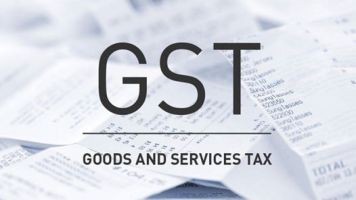
GST is “Goods and Service Tax” proposed in the parliament. This bill is pending and is in discussion since 2007. This thought of centralized and uniformed tax system came into the discussion in 2000 when Vajpayee Government set up the committee to reduce complexity in the tax system.
Today around 144 counties all over the world has adopted GST method for taxation. France was th
e first country to adopt GST in 1954.
This article is mainly focused on the importance of GST, and what it is consists of.
In 2013, I worked on a project during my internship at IIM Ahmedabad- Indian Trucking Service Industry, Research and Analysis. I came across some fascinating facts related to goods transportation in India.
According to 2012 data, Transportation industry contributes 6.6 percent of Country’s GDP. Contribution of road transport alone is 4.7 percent. More than 50 percent of the freight is transported via roads. Hence, trucking industry is the backbone of all other industries. It is the key constituent of the industrial supply chain. It is growing at CAGR of 9.08 percent.
Total number of goods vehicles registered in India is 70.06 Lakh according to data for 2011. In which, it is assumed that 45 Lakh goods vehicles are operational in the country.
Motive behind discussing these facts is that, if GST is implemented it will transform this industry and make it more efficient. There are some facts about this industry. This industry is predominantly effected by malpractices followed. At every stage of the transportation, bribe is paid. According to the report of “MDRA- Transparency International India” every truck has to pay anywhere between Rs. 211- Rs. 266 per day. According to this estimate Rs. 79,920 is paid as a bribe, per truck per annum. It was assumed that 36 Lakh trucks were operational in 2006. Estimated total amount of bribe in 2006 was around 22,000 Crores. (Sourced)
If we assume growth of 4 percent CAGR in this amount compared to growth of 9.09 percent CAGR in transport sector then in most pessimistic scenario this amounts to be 30,000 Crores!!!
“The bribe is mostly paid at toll plazas, checkpoints, state borders or during en route stoppages by one or other agencies on pretext of checking documents. The practice of bribe payment is highly institutionalized. The truck drivers even get some kind of a receipt in the form of stickers, tokens etc. to move hassle-free from authorities.” (MDRA Report)
Also, the en-route stoppages including those at checkpoints and entry-points take up to 11 hours in a day. The loss in productivity due to these stoppages is an important national concern. The number of trips could increase by 40%, if forced delays are avoided. And hence, if GST is implemented at place of various other taxes, this efficiency can be achieved.
This will have synergistic effect on all other industries as trucking is the foundation of our supply chain and hence the productivity. Thus, overall efficiency in productivity will rise.
This is one aspect related to supply chain. GST is supposed to bring informality in services and production of goods all over the country. Targeted to reduce inflation and increasing efficiency.
What is GST:
In very simple language Goods and Service tax is uniformed and single tax imposed all over India. Today there are various taxes by central government as well as state government Such as
Central Government Taxes:
- Excise duties,
- service tax,
- custom duty
State Government Taxes
- sales tax,
- entertainment tax,
- VAT,
- Lottery Tax,
- Electricity duty,
- State Surcharges
And many more.
Many of these taxes are double counted and tax is collected on paid tax amount. Also tax is collected at each level of the transaction, like from manufacturer to dealer, dealer to retailer etc. This calls for double counting of tax and hence end price of the product automatically rises. Today overall tax collection is more than 25 percent.
On the other hand, GST is uniformed tax collected throughout the country. The GST is an indirect tax which means that the tax is passed on till the last stage wherein it is the customer of the goods and services who bears the tax. Also tax is collected on “destination” principle which means it will be collected at the end point of transaction. GST is applied on goods and services at the place where final/actual consumption happens. This will avoid double counting of the taxes and hence end price of the product will be reduced. GST rate is yet to be finalized.
There are some issues in implementation as it will cause less revenue for few states. But central government has provided a provision of compensation to such states.
One more thing opposition demands is capping the tax rate at 18 percent in the constitution itself. In my opinion, this will not be the right thing because economy is growing and external factors are volatile. Hence, it will be difficult for government if in case more imposition of the tax is required to manage deficit. If the provision of capping the tax to 18 percent is done in the constitution then it will be heroic task for the future leaders to change this provision in case required. As this is uniform tax all over the country, this will impact adversely in such situation.
Certainly GST will be next taxation reform in India. It will help to reduce the inflation, increase the efficiency and boost foreign investments. Overall effect will improve the GDP significantly and hence economy of the country. There are challenges such as need of IT implementation. Many state has to change their present IT infrastructure and replace it with new. It demands investment. Also awareness at the official level, training and development of the system is important. But, any reform comes with the challenges and hence it benefits the country.
References:
- http://www.gstindia.com/about/ Accessed on 27th 2015
- http://www.relakhs.com/gst-goods-services-tax-in-india/# Accessed on 28th 2015
- Wikipedia- https://en.wikipedia.org/wiki/Goods_and_Services_Tax_(India)_Bill Accessed on 28th 2015
- http://www.transparencyindia.org Accessed on 21st July, 2013
- MDRA
- Yearbook of Road Transport 2010-11 http://morth.nic.in/showfile.asp?lid=838 Accessed on 28th 2015
- MORTH Data Resources
- What Is GST and How it will change taxation in India- http://www.business-standard.com/article/economy-policy/what-is-gst-and-how-it-will-change-taxation-in-india-115050600828_1.html Accessed on 29th Nov. 2015
- Concept Note on GST- Indian Department of Revenue- http://dor.gov.in/Gstintro Accessed on 29th Nov. 2015
